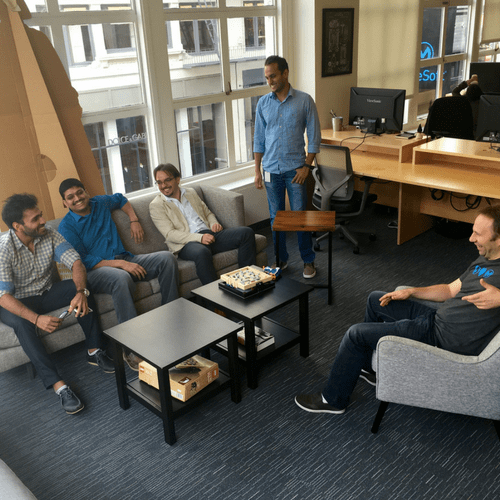At MuleSoft, we’re privileged to work with numerous organizations to create transformative technology. But a lot of those innovations are technologically very precise, which means on occasion architects and engineers need some help with Anypoint Platform. That’s where Avi Karnon and his team step in. Avi is the Senior Director of Global Support & Cloud Enablement at MuleSoft, and he leads a global team of engineers in making sure MuleSoft customers successfully use Anypoint Platform to achieve their objectives.
“Support is a major competitive differentiator for MuleSoft. Our support engineers are ex-developers and are all experts with MuleSoft products.”
“The unique thing about our support organization is that we don’t have support tiers,” Avi says. “All of our support engineers are Level 3 support engineers and can lead the customer to a full resolution. With most customer support organizations, the customer often needs to go through multiple support tiers before having access to a product expert. A key part of our support model is that everyone on the team is capable of fixing any problem.”
This unique support model is due to the partner relationship that MuleSoft has with its customers. “We give our customers a platform to help them do what they need to do to achieve their business outcomes and be successful,” Avi says. “Because Anypoint Platform is so flexible, in order for everything to function well, customers need to understand their implementation of Mule and the exact business problems they are trying to solve. It doesn’t matter how well we build the platform unless we can understand our customers’ paths to success and, crucially, they understand what they’re trying to build. We are in partnership with our customers; we believe that if you are transforming your operational model, this is the right way to do it.”
But, Avi notes, that means that in order to provide support efficiently, MuleSoft’s engineers work extremely closely with customers to troubleshoot – it truly is a partnership where the support team needs detailed information to achieve the customers’ goals. “We spend most of our time reproducing problems,” he says. “We need to get information from the customer. We need data that we can work with so we can identify and fix whatever’s gone wrong. We know from the customer perspective any kind of outage this is close to the end of the world. Even smaller problems are disasters to the customers. So, if there’s a very severe case, there is no lag — it takes us less than 15 minutes to get started working with a Level 3 support engineer. And that kind of close partnership is what allows us to do this.”
This efficient and fast customer support operation means that working on Avi’s team requires a very particular skill set. “Obviously the support team is very technical,” he says, “but they also are customer-facing, so they need to have good communication skills. They must enjoy being challenged by technical issues, but they need those soft skills as well. They have to have empathy. When customers get in touch with us, they are sometimes frustrated and upset. We have to convey that we are there. It’s important always to think about your customer’s situation, not your situation. The boss is on his neck. He is running into a wall. He is under stress right now. So, we need to make it clear that we’re on his side and here to help.”
The other great thing about the support organization, says Avi, is that the feedback team gets from customers goes straight into the product. “We consider each Support request as a point of feedback. It’s our responsibility to aggregate this data and identify trends to continue and improve our platform and products.”
“So we have a very close relationship with engineering,” Avi continues, “and meet with them on a weekly basis to triage and fix any bugs we identified. One of our most important responsibilities is to make sure engineering is aware of our customers’ experience. The engineering team can solve defects that were identified during the support process. We can provide as much information as we can to engineering, and in many cases, we’ll suggest how to fix it. As a result of our work, we are now part of the release process. Our goal and mission are to be the voice of the customer.”
What’s new in customer support
One of the improvements the support team has introduced is a new Support Center. “It’s had a significant facelift,” says Avi. “We had an old user interface, and now it is more modern. There are also many other benefits for the customers. For example, we made our Knowledge Base public, and every customer can search our knowledge base; instead of waiting for support to reply, they can find answers and solutions themselves.
We also added a feature that when a customer files a ticket, it dynamically suggests articles related to the data typed by the user. Many of our customers want to do things themselves and our mission is to enable self-service for these customers. By providing them easy access to the knowledge, and to search wherever they are. The Support Center is also an important communications channel; we notify customers about important issues like product announcements, critical patches or other ‘hot’ issues.”
All credit to the amazing support team

All this adds up to a pretty unique support organization, one that truly partners with customers to create great things. “The one thing I wish more people knew about the support team is how hard they work, how uniquely beneficial our model is, and how much the team knows about the product,” Avi notes. “We hire great technical talents that truly care about the customers and the product, and are focused on helping our customers be successful to drive the outcomes they are looking for.”
Thanks, Avi! Take a look at the Support Center, and if you’re interested in joining the support team, check out some of the open positions on our careers page.









